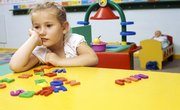Success in the academic arena is an achievement that often requires students to overcome many hurdles, some of which are more challenging than others. If academic performance hinged on raw intelligence and work ethic alone, academic success would be almost a given. However, other factors can contribute to a student's level of success throughout all stages of education. Socioeconomic status, the level of his parents' education and the class sizes to which he is exposed are all issues that could stand in the way of a student's success in the classroom. Developing an awareness of the factors that could negatively impact academic success is one way to better prepare parents, teachers and students to deal with them.
Socioeconomic Status
Students whose families are of low socioeconomic status progress more slowly academically than their wealthier peers. Wealth and status are an umbrella for many issues that affect performance, including suffering chronic stress, having little to no homework help available at home and having obligations around the house or at a part-time job that may curtail study time. Literacy and development issues can begin to affect children before they are even of school age, putting them at an immediate disadvantage.
Parents' Education
The amount and quality of homework and study assistance available at home can impact a student's performance. However, the level of education achieved by parents can also influence a student's ability to achieve by affecting parental expectations. Parents are "expectancy socializers," according to researchers at Wayne State University. If they set the bar of success high for their children and systematically encourage them, their children are more likely to perform well at school. And those expectations for success are connected to the amount of education a parent has received.
Class Size
The students-per-teacher ratio of a school is a statistic that interests many parents and is often used as a recruitment tool. But how much does class size really matter when it comes to student performance? The Center for Public Education found that smaller class sizes (18 students or fewer) had the greatest benefit for kindergarten and early elementary school students; those benefits, however, hinge on the quality of the teachers. The largest achievement gains were observed in minority students and those of low socioeconomic status, providing a concrete strategy to combat the challenges faced by these populations. And the effects are lasting. Students who learned in less-populated classrooms in elementary school scored higher on ninth grade standardized tests than their peers.
Related Articles
References
Writer Bio
Sage is a Film and TV Writer for Bustle and a freelance recapper for Entertainment Weekly. She also shares her ongoing love affair with pop culture and fandom culture on her personal entertainment blog, Head Over Feels.











